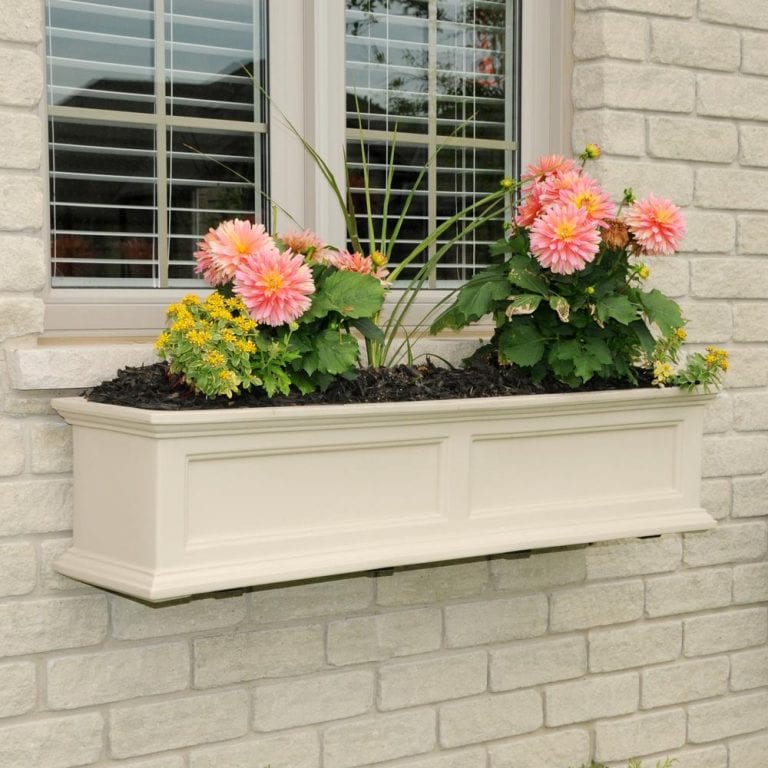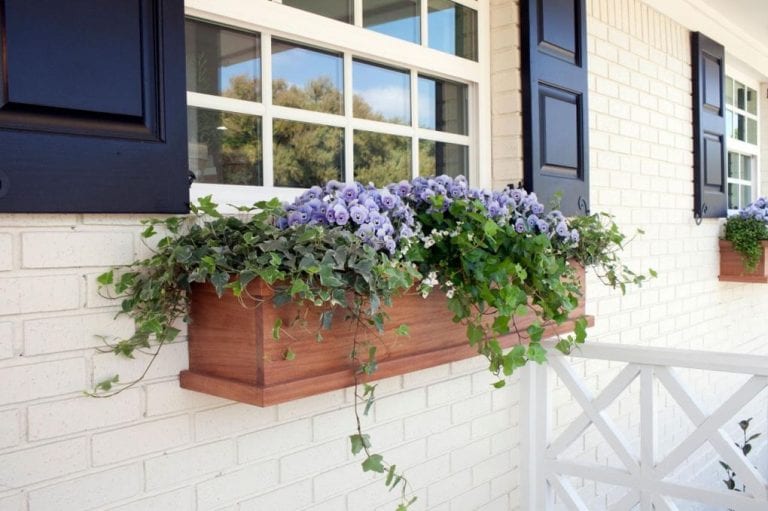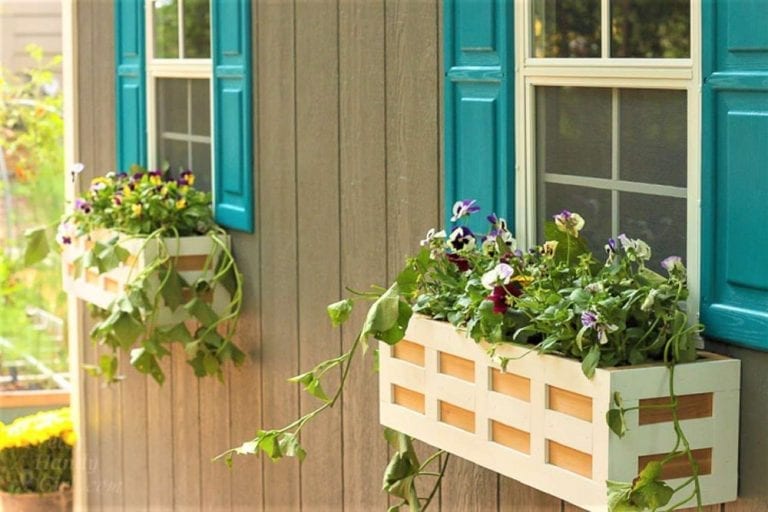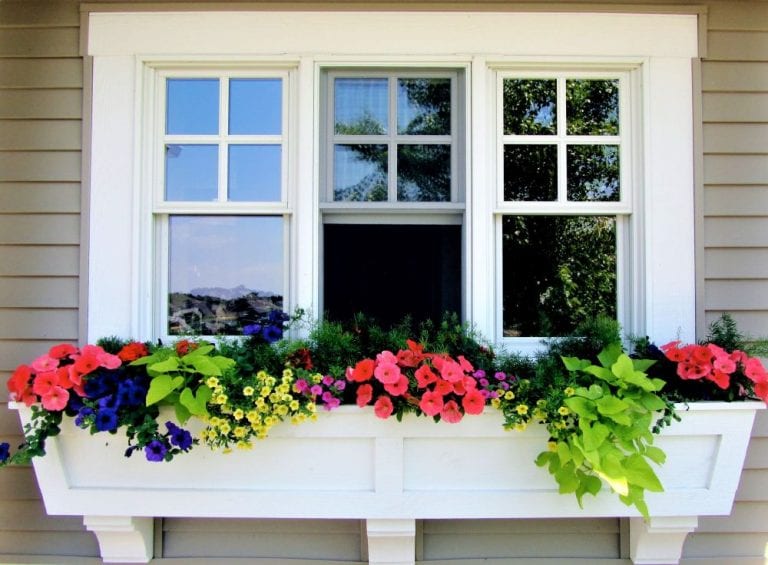Window boxes are a familiar sight all over the world. They’re simple and marvelously effective at brightening up any home. Painted to match the exterior around them and delivering bright seasonal colors from pansies, petunias, ivy geraniums, and more – window boxes can work with every sort of home. They seem particularly fitting on traditional gingerbread houses, but you can make window boxes work on anything from a modern ranch home to an urban apartment.
At its core, a window box is simply a planting container attached to your house. They’re a very easy gardening challenge. If you’d like to set up window boxes of your own, the following tips will help:
* Pick out window boxes that match the exterior style of your home.
Wood is the most popular material for window boxes, and you’ll find a wide assortment available built out of treated hardwood or softwood. These can be easily stained to painted to match your home. For alternative looks, you can also find boxes made of plastic, terra-cotta, metal, or even concrete. These can be trickier to work with, but the effect can be striking.

image source: homedepot.com
* Choose the right size.
Window boxes look their best when they are very close – within a few inches – to the length of the window above them. Minor differences in length (either longer or shorter) are fine. Your boxes need to be large enough to give plants room to grow and to hold sufficient moisture in the soil. As a rule of thumb, look for at least eight inches in width and eight inches in depth.
* Fit odd windows by making your own boxes.
Building your own window boxes is an easy bit of carpentry. Use one-inch boards for the sides of the box. Use outdoor screws – galvanized or brass – to join them together. Seal the seams with waterproof glue and drill several holes in the bottom for drainage.
* Use sunny exposures for most plants.
A well-lit window box will need regular watering to keep your plants from drying out. Take a look at the overhead situation to determine whether or not your window boxes will catch the rain. If they’re shielded, you’ll need to check your plants for dryness more often. If your only available windows are shaded, pick out plants that are better suited to partial sunlight or full shade.
* Fix window boxes a few inches below their windows.
Bear in mind that boxes will have to be lower if you have outward-opening windows. Use steel brackets to support your boxes thoroughly. Mount them to your home’s exterior at 18-inch spacing. Remember to get the right sort of screws to suit your exterior surface – masonry and siding require different fasteners! Double-check your box’s placement and then screw it down onto the brackets. Always mount your window boxes empty; planting comes after.

image source: diynetwork.com
* Pick the right planting option.
There are three main ways to introduce window box planters for your outdoor space. You can load the box with soil and plant directly. You can put potted plants in your box and add lightweight fillers like moss or bark around them. Or you can plant in a liner (plastic or metal) that fits snugly in the box. This last option makes it especially easy to rotate out your plants with the changing of the seasons.
Planting should be carried out as with any container. Cover the drain holes before filling the box with soil. Leave the top of the soil at least 1 inch below the top of the box so there’s space for water. Give your window box routine gardening care: regular water, liquid fertilizer, and grooming to trim off faded leaves and flowers.
PLANT SELECTION
Once you have your boxes set up, you’re well on your way to successful window box gardening. Picking the perfect plants is a huge part of raising beautiful window boxes. As a general starting point, assemble a mixture of compact uprights that will look good without blocking the window, trailers, bulbs, and filler plants.
To maximize the drama of the plants when they bloom, pick flowers that will contrast with the wall behind them. Vibrant blooms are best against neutral siding, while paler flowers look good against dark masonry. Below you’ll find 12 solid window box plant selections. This list is just a starting point. You can incorporate a nearly endless variety of plants into attractive, thriving window boxes.

image source: thespruce.com
Annuals
* Sweet Alyssum: This sturdy trailer lends a fragrant base to many window boxes. It often reseeds itself and its growing requirements are minimal. Blossoms come in white, pink, purple, and cream.
* Lobelia: It’s a standby in a variety of gardening situations for a reason. This hardy annual delivers big falls in a variety of colors, including white, rose, lavender, cobalt, and light and dark blues.
* Pansies: Pansies deliver a wide range of vibrant colors. They have excellent blooming lifespans, filling in the gaps between other plantings.
* Petunias: These are perfect for a shiny summer box. To get more blooms in all sorts of colors, try varieties bred for cascading and multifloras.
* Impatiens: A perfect choice for shadier window boxes. Low-growing dwarf varieties are ideal for window planting. For especially vibrant foliage, try New Guinea hybrids.
* Dianthus: Combine powerful colors with beautiful fragrance. Dianthus is a hardy and forgiving plant. Let the breezes waft sweet, fresh scents in when the weather is right!

image source: thespruce.com
Permanent Plants
* Ivy Geranium: The stalwart champion of hanging baskets is a winner in window boxes, too. Its trailing stems deliver bright flowers. This may need to be treated as an annual in cold climates.
* Geraniums: Possibly the iconic window box plant, geraniums deliver vibrant clusters of flowers across a spectrum from purest white to deepest crimson. Geraniums are easy to grow. They may also be annuals in cold climates.
* Dwarf Bulbs: A wide variety of different dwarf bulbs work perfectly in a window box. Try daffodils, cyclamen, grape hyacinth, crocus, or others.
* Ground Ivy: Ground ivy sends impressively long stems bursting from your window boxes. This is a strong winter survivor in moderate climates.
* English Ivy: Attractive and hardy, ivy is the perfect choice for delivering trailers in the sun and shade. Look for varieties with accented leaves (yellow or cream) if you want extra color.
* Miniature Roses: There are dozens of varieties to choose from. They all work well when combined with other plants, either permanents or annuals. Many miniature roses are highly fragrant, too.
